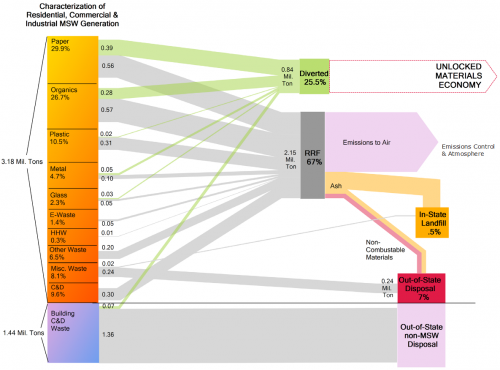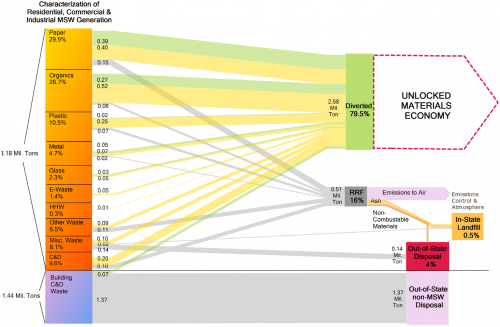Yale School of Forestry & Environmental Studies and The Connecticut Energy & Environmental Protection Agency have conducted a study on waste flows titled ‘Unlocking the Value: Transforming the Connecticut Materials Economy’.
The study features two Sankey diagrams that show the present situation (2010) and a an alternative scenario, where much of the materials are recovered.
This is the current situation in which only 25% of the 3.16 Mt of waste (Building C&D Waste not considered) are recycled.
The authors explain that
“Each year Connecticut residents and businesses generate more than three million tons of munici pal solid waste (MSW, or “regular trash”). Currently existing recycling and reuse programs capture a portion of the value of Connecticut’s waste, while waste-to-energy facilities process and recover energy from most of the MSW that is not recycled. With our recycling infrastructure underutilized, and resource recovery facilities at capacity, there is vast potential to transform our management and processing systems to further unlock the economic potential of waste.”
The optimized scenario with much increased recycling of materials (almost 80%) is shown in this diagram:
Connecticut is looking into the environmental and economic benefit of a recycled materials econonmy.

